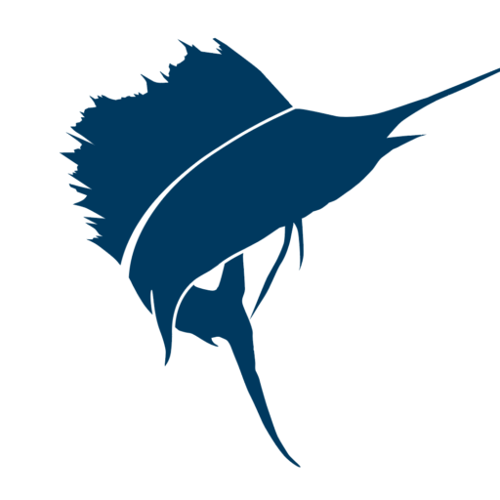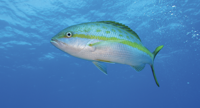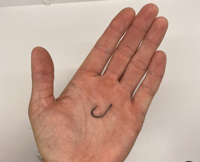When it comes to snapper fishing, the yellowtail is a Florida staple. This is particularly the case in the state’s southern reaches, mainly the Florida Keys, where there is a massive demand for yellowtail snapper. As a result, the pressure on these fish from commercial anglers is relentless throughout the year. Additionally, countless recreational anglers target these fish regularly as well, making it one of the most sought-after game fish in the Sunshine State. Yellowtail snapper are naturally very wary predators with excellent eyesight, but so much pressure makes a stealthy approach necessary to catch the big ones.

How to catch yellowtail snapper
Almost anywhere within the extensive reef system of the Florida Keys, anglers can easily chum up massive schools of yellowtail snapper. However, it seems that finding the fish is less than half the battle. Even when they’re frenzied behind the boat in a massive cloud of chum, these fish won’t fall for subpar presentations that don’t appear natural. In fact, it can be incredibly frustrating to see a sea of yellow containing trophy yellowtail, but only then manage to catch a few fish short of the minimum length requirement. If this has happened to you, then there’s a good chance your presentation isn’t stealthy enough.
Certainly, terminal tackle is going to be your most important consideration when it comes to maintaining a stealthy approach. That means this is not the place for bulky swivels, weights and hooks that are too large. By the same token, you need to pay close attention to your leader as well. Although monofilament leader has its own advantages in fisheries across the world, today’s fluorocarbon leader material is incredibly stealthy and is certainly the recommended option here. That’s a no-brainer. However, the strength of that leader is a different consideration altogether.
In any fishery that requires the use of a leader, the key to success is striking a balance between what is stealthy enough, but also strong enough to stand up to the target species. Fortunately, yellowtail snapper fishing doesn’t require heavy leader as these fish are not all that large and can’t easily bite through fishing line. Furthermore, though they are certainly structure-oriented living on reefs, yellowtail snapper are known to feed anywhere from the seafloor to the surface, unlike a grouper, which will stay near the bottom and break you off on nearby structure. That said, even a large yellowtail can break you off if you’re using line that’s too light.

how to chum for yellowtail
Ultimately, it’s all about assessing the conditions. If the water is a little bit cloudy and the fish are being particularly aggressive, then 20 lb. fluorocarbon will get the job done. Not only will this be effective on yellowtail snapper, including the largest fish in the slick, but it also keeps you in contention with larger mutton snapper and even the occasional red or black grouper. On the other hand, if the water is extremely clear, as it often tends to be in the Florida Keys, the fish will be very finicky and just might refuse anything you put in front of them. This is certainly the case with the large yellowtail, knows as “flags,” which are notoriously wary.
When this happens, 20 lb. test fluorocarbon, though very stealthy, still might be too heavy. We recommend scaling down incrementally to find the right solution. If you start at 20 lb. and don’t get the bites you’re looking for, go to 15 lb. and so on. On a day when the water is clear and the fish aren’t incredibly active, don’t be surprised if you have to go all the way down to 8 lb. test to catch your first flag. However, be sure to rig properly because 8 lb. test is very light, and even a yellowtail can cut you off. The goal is to find a happy medium where you get bites and land fish.

yellowtail hook size
When it comes to hook size, smaller is always better in this fishery. Our go-to is the VMC size 1 O’Shaughnessy Live Bait hook. Keep in mind that this hook is available in a range of sizes and remember there’s a difference between “Size 1” and “1/0,” as 1/0 is larger. Jigheads are also very popular in this fishery, particularly in deeper water or heavy current when you need to get your bait down below the surface. If you feel you need to increase the weight of your jighead, make sure you do so without increasing the size of the hook.
In addition to the attention to detail on your terminal tackle, chumming properly and having the right bait also helps. Though many anglers like to mix traditional ground chum with sand to maximize their purchase, sometimes finicky fish respond more positively to the chum without the sand. When it comes to bait, fresh is best and make sure you’re prepared with a variety. Small bonito strips are great options, while a de-shelled shrimp body is also a favorite. For the largest yellowtail snapper in the school, don’t be afraid to deploy a small live pilchard. These fish have small mouths, but a larger live bait might deter the smaller fish and leave the big ones in play. You may get fewer bites, but the ones you do get will count.
For more Rigging Station articles, click here.
















(0) comments
Welcome to the discussion.
Log In
Keep it Clean. Please avoid obscene, vulgar, lewd, racist or sexually-oriented language.
PLEASE TURN OFF YOUR CAPS LOCK.
Don't Threaten. Threats of harming another person will not be tolerated.
Be Truthful. Don't knowingly lie about anyone or anything.
Be Nice. No racism, sexism or any sort of -ism that is degrading to another person.
Be Proactive. Use the 'Report' link on each comment to let us know of abusive posts.
Share with Us. We'd love to hear eyewitness accounts, the history behind an article.